Crossing the Uncanny Valley
Touch Deprivation
choreographic installation
How Art Museum, Shanghai, 2021
photo credit: Gan Lin
[choreographic installation]
The term uncanny valley refers to the relationship between the similarity of an automaton to a human appearance and the emotional response it evokes. Initially introduced by the Japanese roboticist Masahiro Mori in 1970, the concept suggests that a robot becomes increasingly appealing as it resembles a human more closely, until a certain point where the heightened similarity triggers an uncanny or frightening sensation.
Fear and anxiety, however, have accompanied the development of lifelike machines throughout history. The uncanniness of automata was first captured by E.T.A. Hoffmann in his 1816 story The Sandman, and further explored in the works of German psychiatrist Ernst Jentsch before World War I. The four-year-long conflict, in turn, challenged notions of humanity, both through mass weaponry and prosthetic repairs for mutilated faces and bodies.
The uncanny response arises from an inability to classify an object as living. Humanoid robots and highly realistic graphic characters may captivate us until their resemblance blurs the line between human and non-human. Yet, this response is not static; it evolves over time. Just as nobody is terrified by the Lumière brothers’ L’arrivée d’un train en gare de La Ciotat, modern people are becoming accustomed to humanoid robots and digitally or surgically altered humans. However, as tolerance for the uncanny response grows, it raises ethical concerns about the humanoid’s rights and their impact on our perception of humanity per se.
Crossing the Uncanny Valley explores whether the diminishing uncanny response to humanoid robots and highly realistic graphic characters leads to the dehumanization and objectification of real humans. It challenges our perceptions of what it means to be human in an increasingly technologically advanced world. Will we still be able to recognize humanity if we accept that someone closely resembling a human being is not? And will we ever believe in the real Maria after we have burned the false one?
The choreographic installation was conceived in dialogue with the space and context of Hajime Sorayama’s exhibition Metropolis and commissioned by HOW Art Museum (Shanghai) in 2021. Three choreographic installations—Olimpia, Touch Deprivation, and Dialogue—ran concurrently for two hours, allowing audience to navigate between them freely.
The architectural layout of the exhibition space facilitated multi-dimensional perception while physically and conceptually segregating the scenes. The intimacy of Dialogue was in dissonance with the explicit environment, while haptic interactions of Touch Deprivation were counterbalanced by the unspoken barrier of installed cameras for live streaming of the performance. In Olimpia, claustrophobic atmosphere, with its limited audience access, was expanded by multiple reflections in omnipresent mirrors. Deliberately slow movements disrupted the choreographed sequence and coherence of the performance, contrasting with a nearby pre-recorded video where they were performed three times faster.
All performers donned screens displaying pre-recorded videos of eyes, with their movements deliberately altered to varying degrees to convey the level of humanity of each character. Humanoids’ eyes lacked blinks and other micro movements, evoking an uncanny sensation for observers. Accompanying the installations were pre-recorded texts and soundscapes that structured the narrative of the performance, adding another layer of reflection to the theme of the uncanny valley.
Collaborators
Gao Jie (costume designer for Touch Deprivation), Francisco Hauss (performer), Alina Kochetova (photographer), Liu Xiao (performer), Linnea McCully (performer), Horacio Ortiz (the author of pre-recorded texts), Wu Jialu (performer).
Brenton, H., Gillies, M., Ballin, D. and Chatting, D.(2005) ‘The uncanny valley: does it exist’, In Proceedings of conference of human computer interaction, workshop on human animated character interaction. Pennsylvania: Citeseer
Flannery, M.T. (2019) ‘The ‘uncanny valley” and the verisimilitude of sexual offenders: Part I: an ‘ethorobotic’ perspective’, Texas A&M Law Review, 6(3), pp. 541-618
Hoffmann, E.T.A. (2015) The Sandman. London: Penguin
Laue, C. (2017) ‘Familiar and strange: Gender, sex, and love in the uncanny valley’, Multimodal technologies and interaction, 1(2)
Metropolis (1927) Directed by F. Lang [Feature film]. German Reich: UFA.
Installation 1. Olimpia
Olimpia refers to the character in E.T.A. Hoffmann’s The Sandman. She is an automaton designed to resemble a human being, captivating Nathanael, the protagonist, with her beauty and apparent empathy. While others perceive Olimpia as strange and mechanical, Nathanael discerns meekness and sensuality in her laconic way of conversation. Tragically, Olimpia becomes the catalyst for his descent into madness, leading him to forsake his human fiancée, whom he derogatorily refers to as an ‘inanimate automaton,’ in favor of the robot.
The performance reflects on the contentious practice of consuming lifelike child sex dolls and delves into its potential repercussions of objectifying women and children. It embodies thought-provoking questions: Will the fulfillment of one’s fantasies blur the distinction between acceptable and unacceptable behavior? Will the programmed compliance of automata alter societal expectations regarding real women? And is there a possibility of reversing the uncanny valley once it has been crossed?
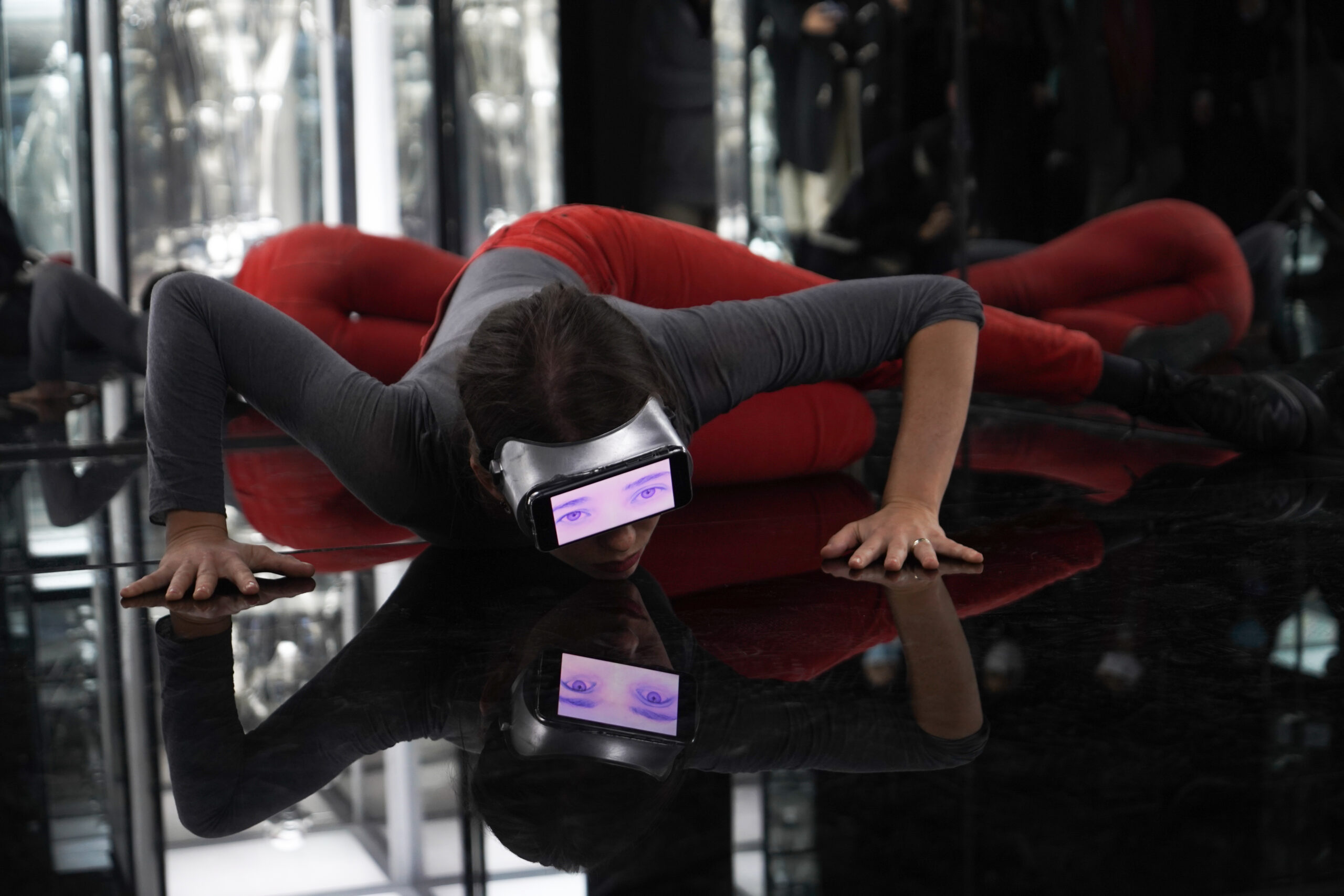
photo credit: How Art Museum
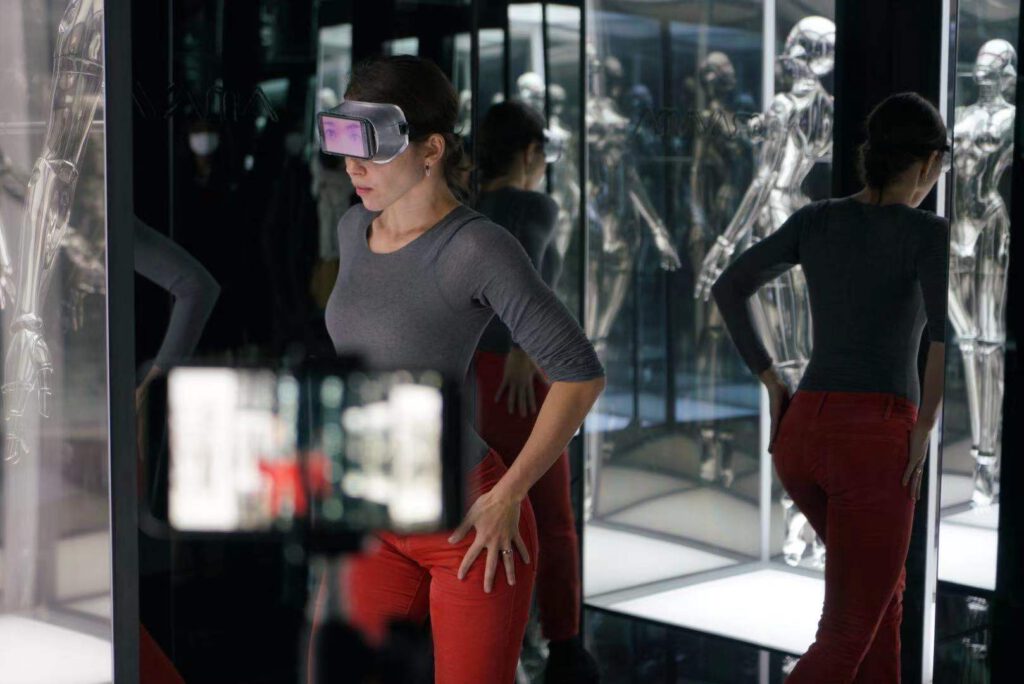
photo credit: Joy
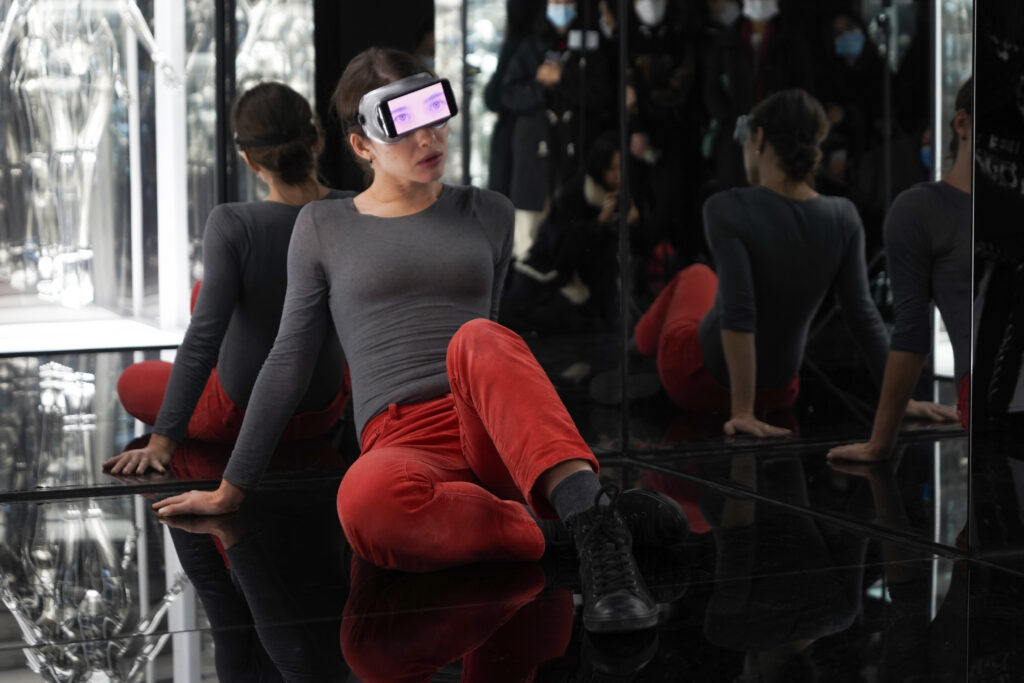
photo credit: How Art Museum
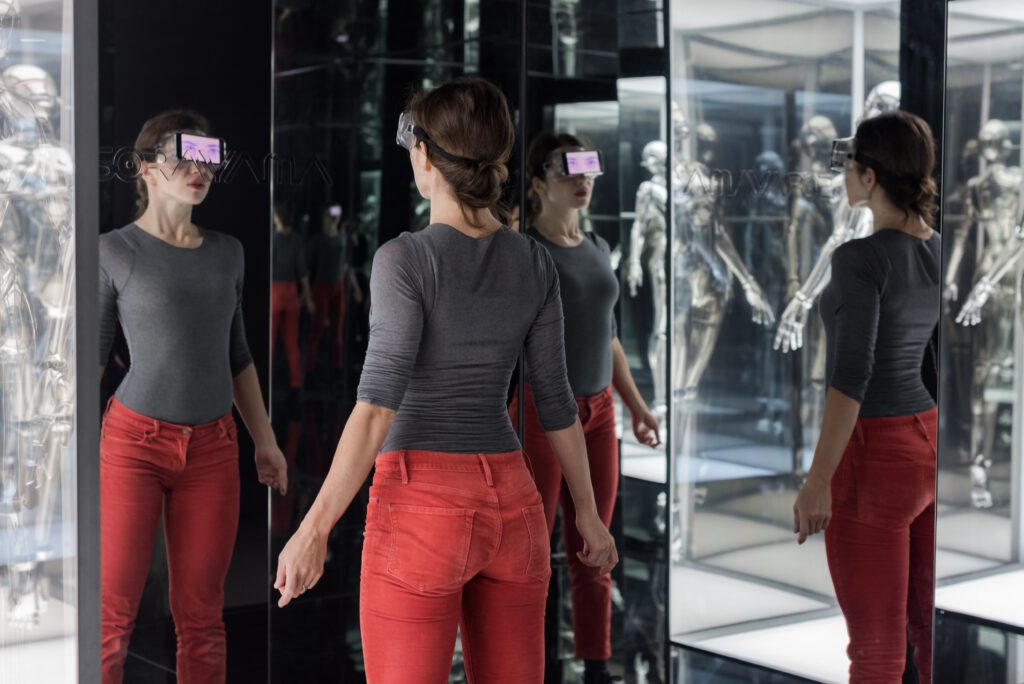
photo credit: Alina Kochetova
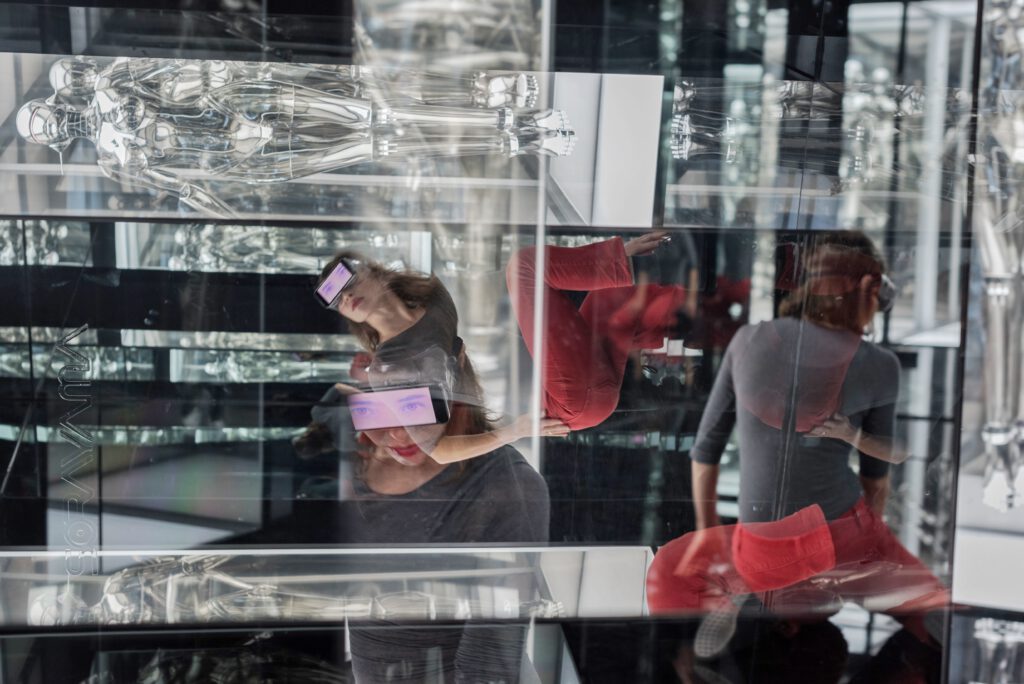
photo credit: Alina Kochetova
Installation 2. Touch Deprivation
Touch deprivation or touch starvation has received limited research attention outside of wartime nurseries and select orphanages. The recent pandemic has served as a catalyst for studying this phenomenon, which has been exacerbated globally due to lockdowns and social distancing measures. The lack of skin-to-skin contact has been recognized as correlated with anxiety, depression, fatigue, and sleep disturbances. However, despite its crucial role in human health, touch is still overlooked when the future of humanity is imagined and devised.
In virtual and augmented reality experiences, visual and auditory stimuli take precedence, neglecting the importance of haptic and kinesthetic sensations for exploring and interacting with the world. Moreover, the outdated yet alluring notion of the mind transcending the physical body fuels the virtual gaming and simulation industries, perpetuating a skewed perception that prioritizes remote vision and hearing over tactile and kinesthetic experiences. This performance reflects on the disparity between the physiological necessity for touch and the societal obsession with transcending corporeality. It raises questions about how the phantom desire for tactile contact persists in bodies deprived of haptic perception.
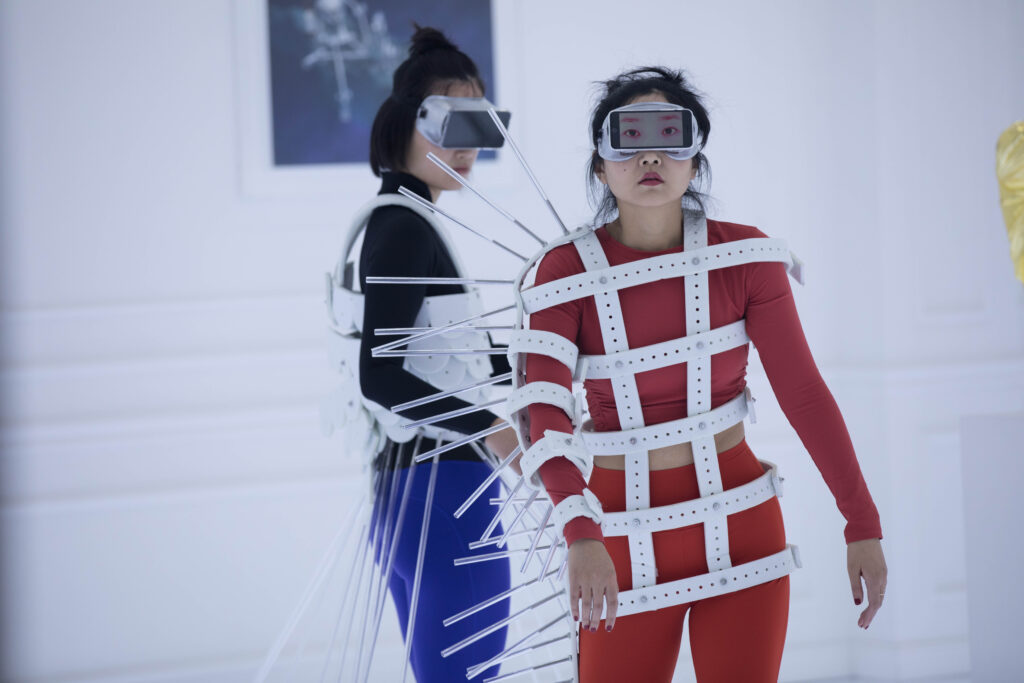
photo credit: Gan Lin
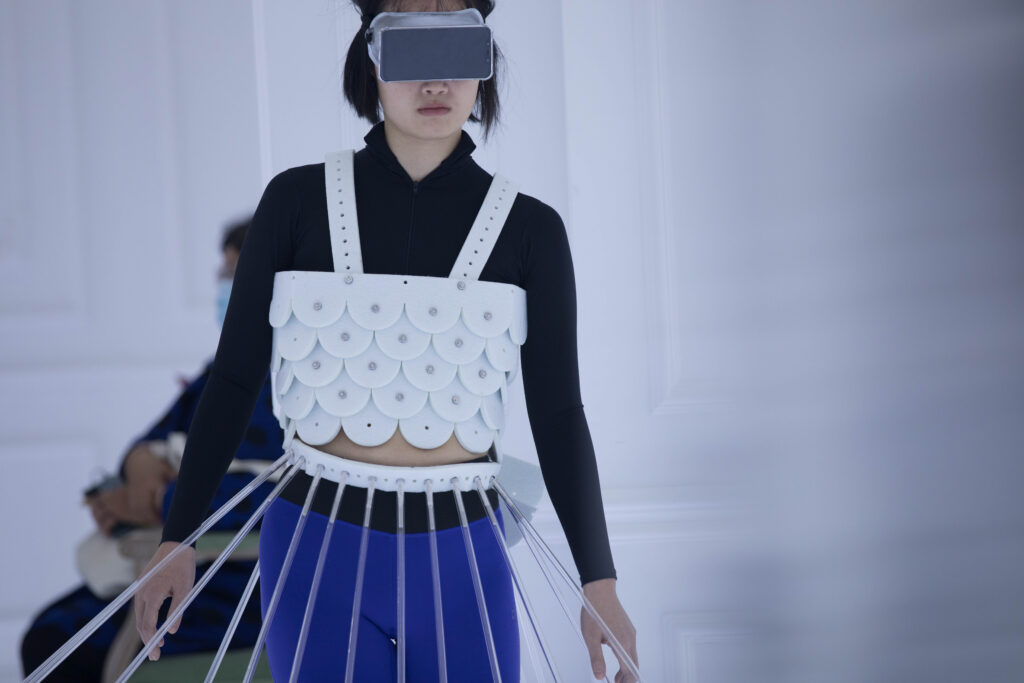
photo credit: Gan Lin
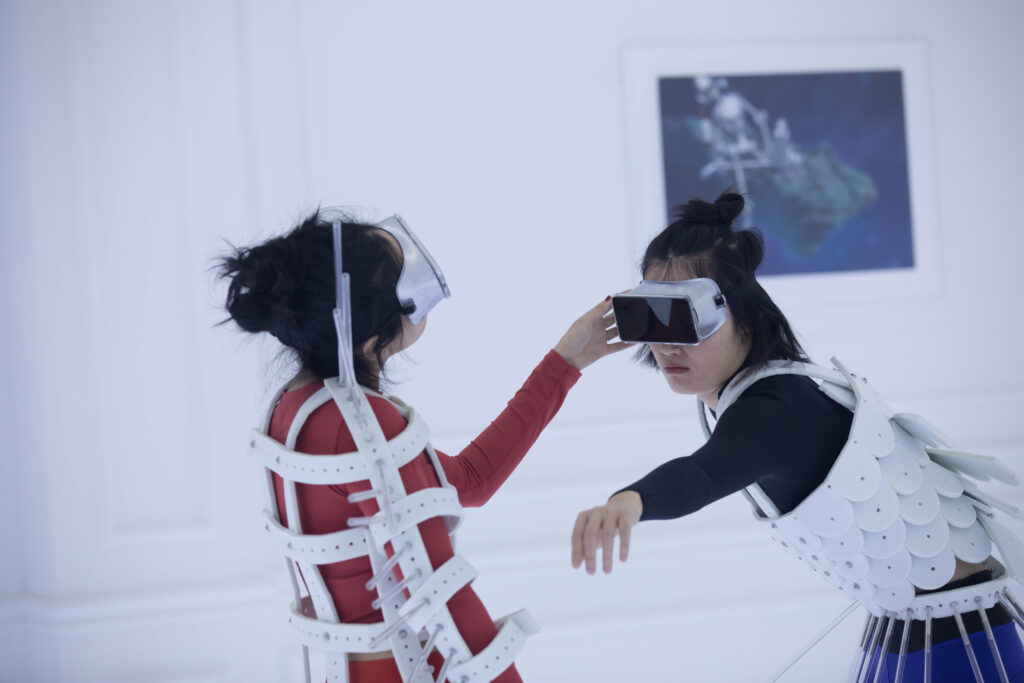
photo credit: Gan Lin
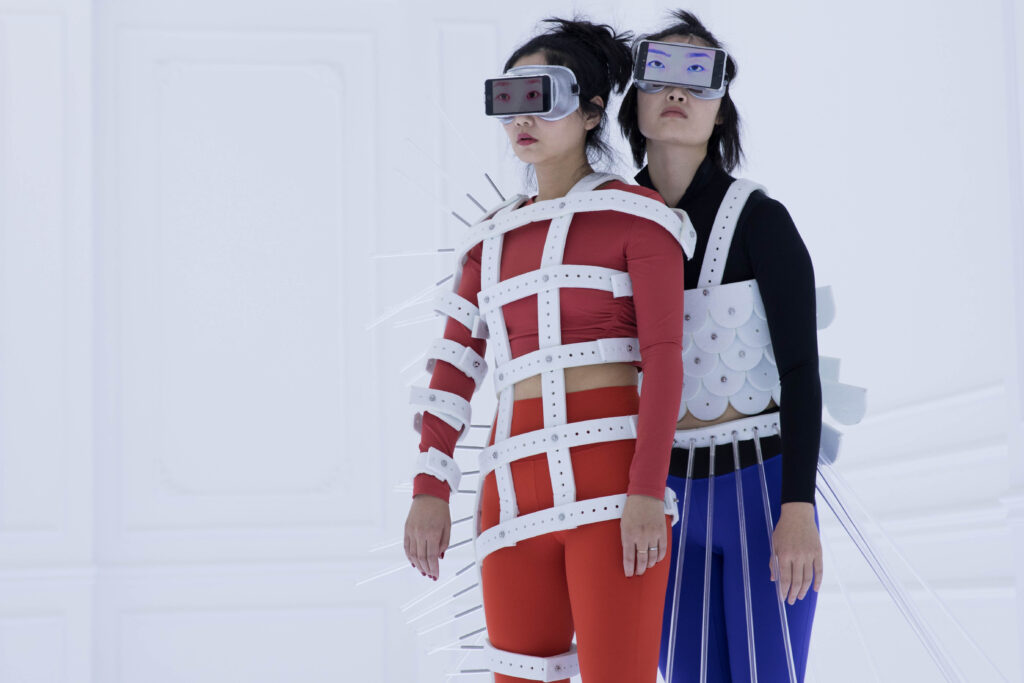
photo credit: Gan Lin
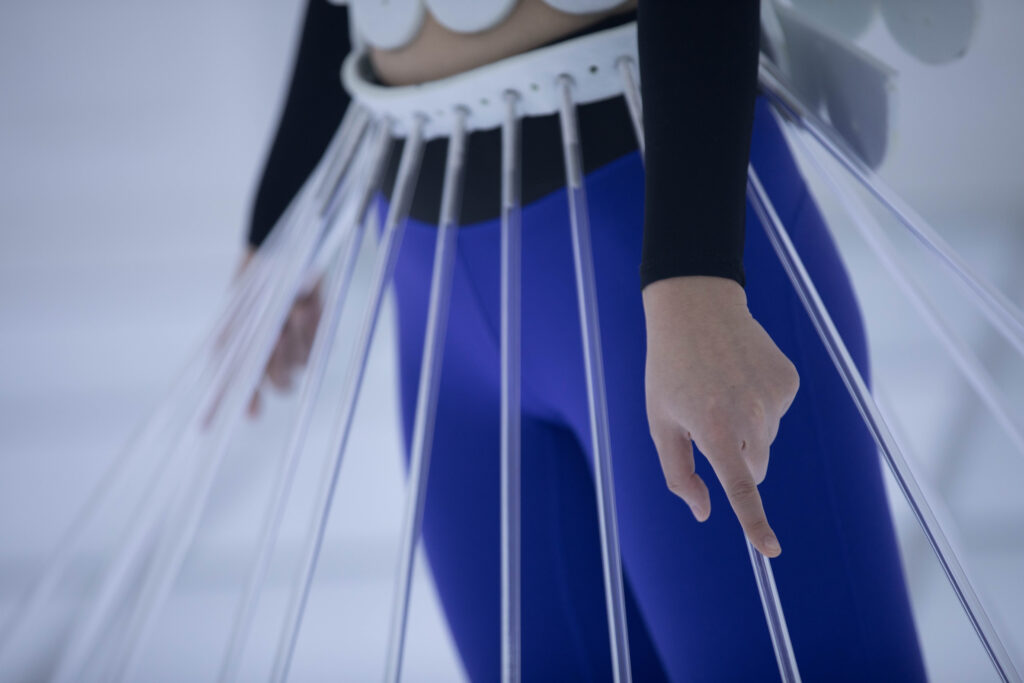
photo credit: Gan Lin
Installation 3. Dialogue
The design of humanlike automata reflects our comprehension of human beings and significantly influences our approach to human bodies and behavior, framed within the man-machine model. The fascination with automata among Enlightenment thinkers uncovered a stark dichotomy between the ideal of machinelike humanity and the perception of automatons as lacking autonomy. Similarly, as the Scientific Revolution advanced mechanistic physiology, the ongoing progress in machine learning and neural networks, drawing insights from models in neurobiology studies, shapes the paradigms of learning and teaching in education.
Artificial intelligence challenges us to reassess the intelligence of our own. How can we be certain that our desires, feelings, and beliefs are not merely outcomes of neural networks confined by the framework of DNA and early childhood experiences? Does free will genuinely exist, or are our choices predetermined by our innate nature and pre-conscious nurturing? The performance delves into these questions through a kinesthetic dialogue extended in space, blurred by the ambiguous juxtaposition of ‘human-nonhuman’.
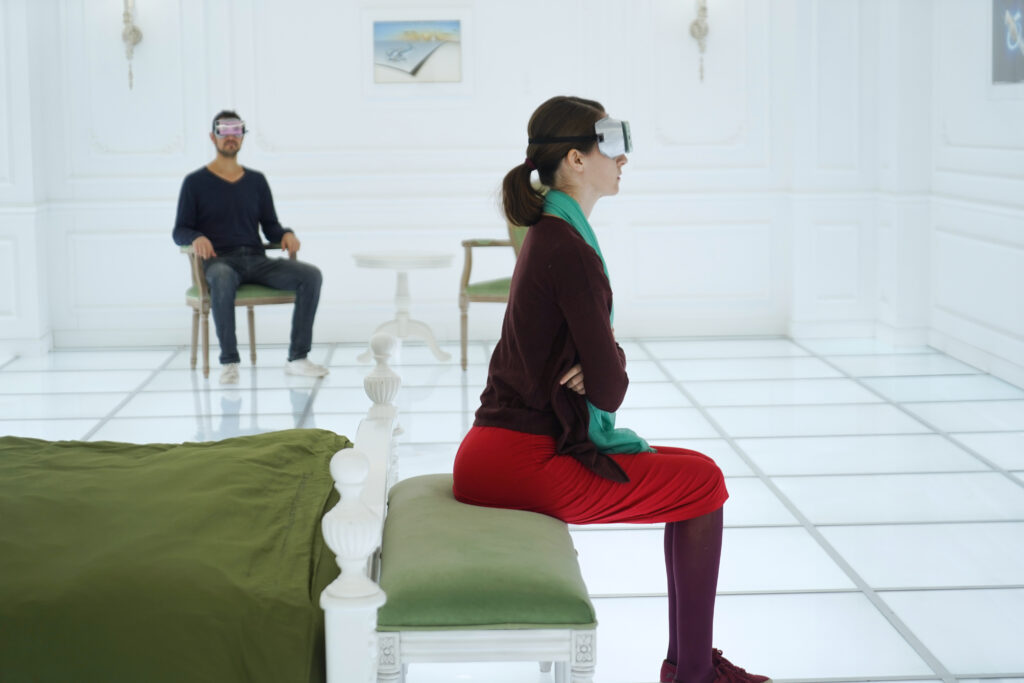
photo credit: How Art Museum
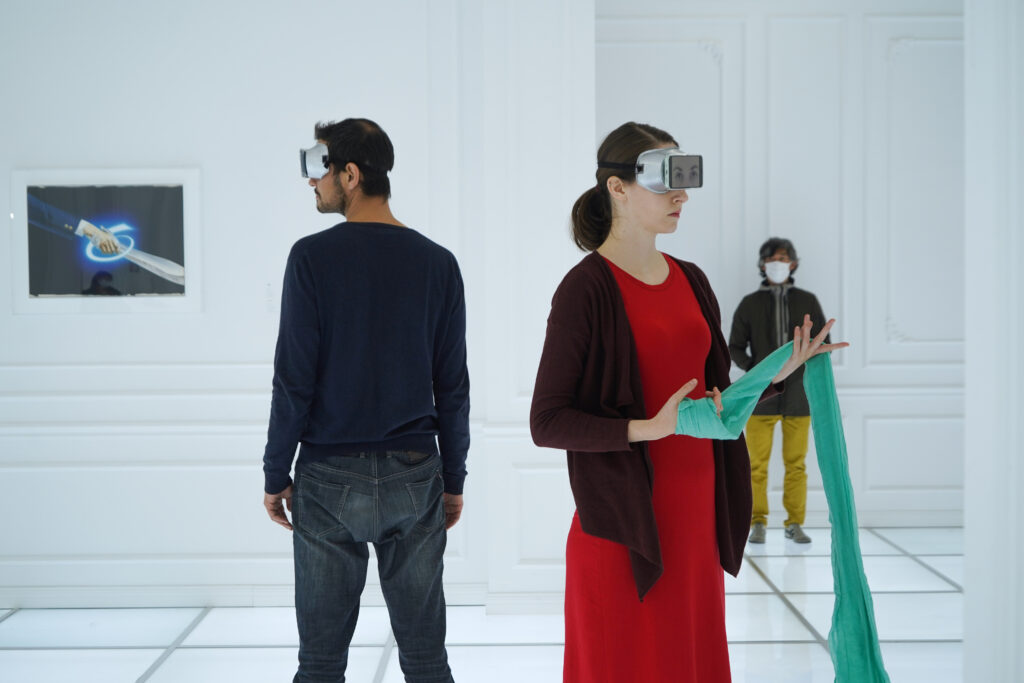
photo credit: How Art Museum
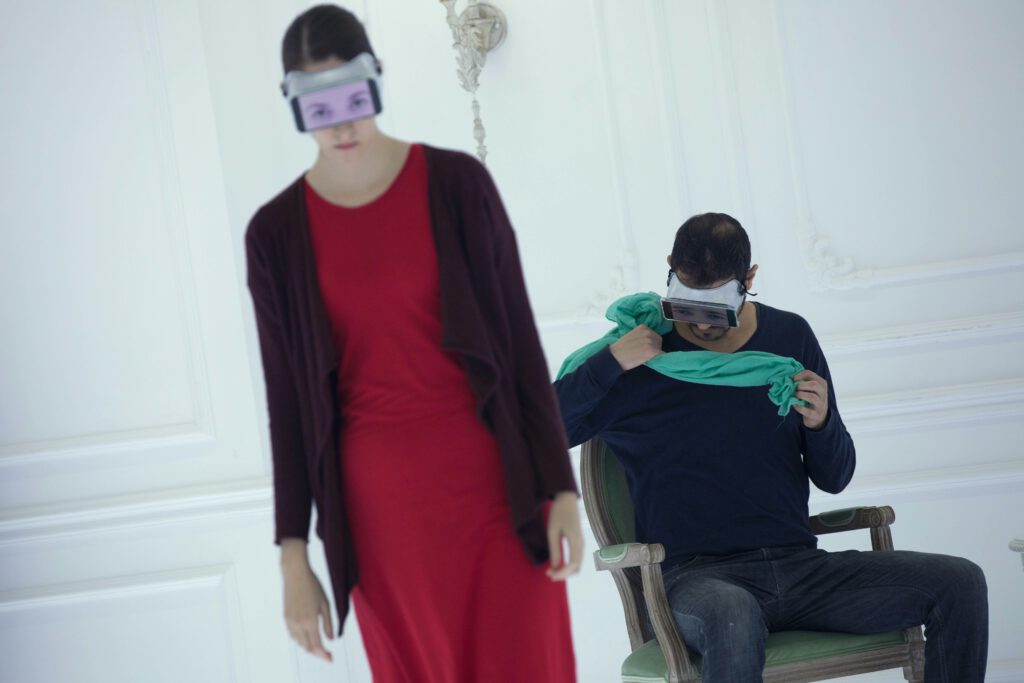
photo credit: Gan Lin
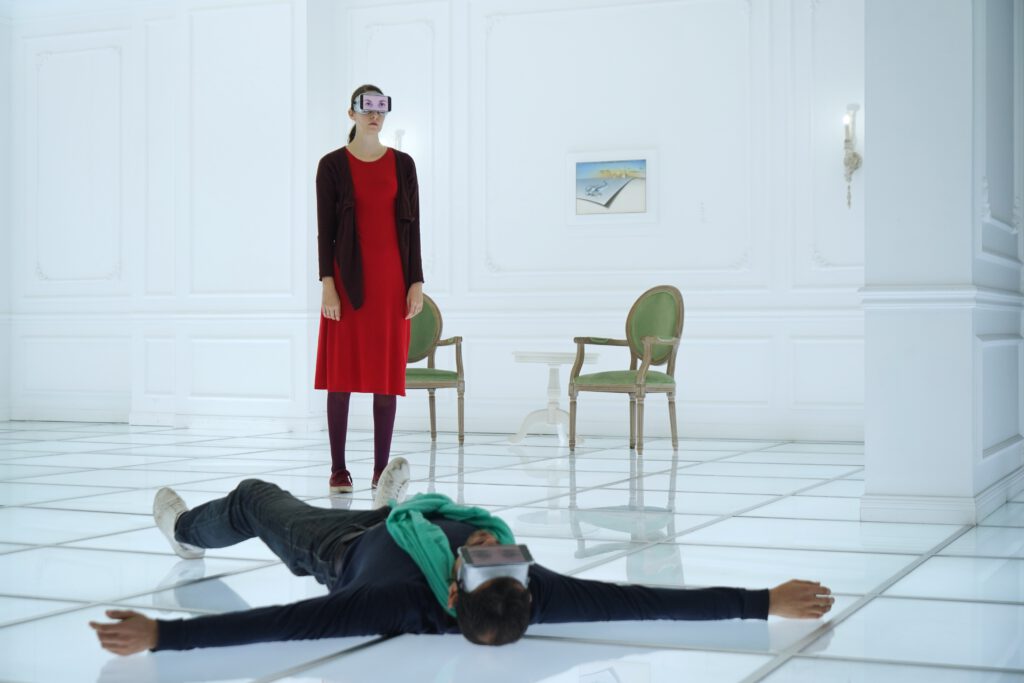
photo credit: How Art Museum
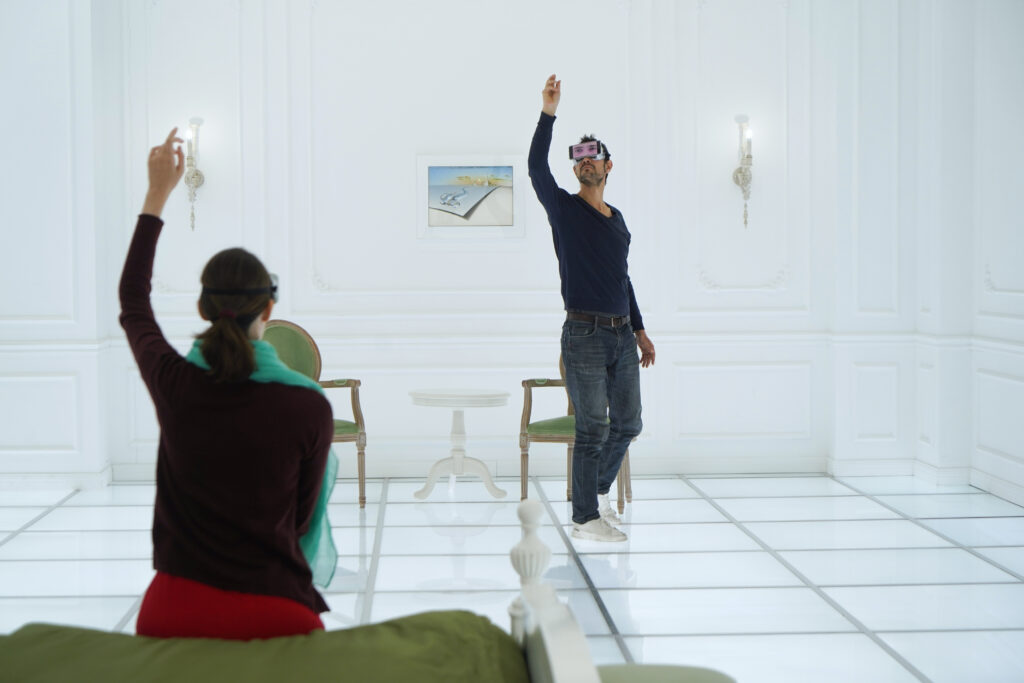
photo credit: How Art Museum